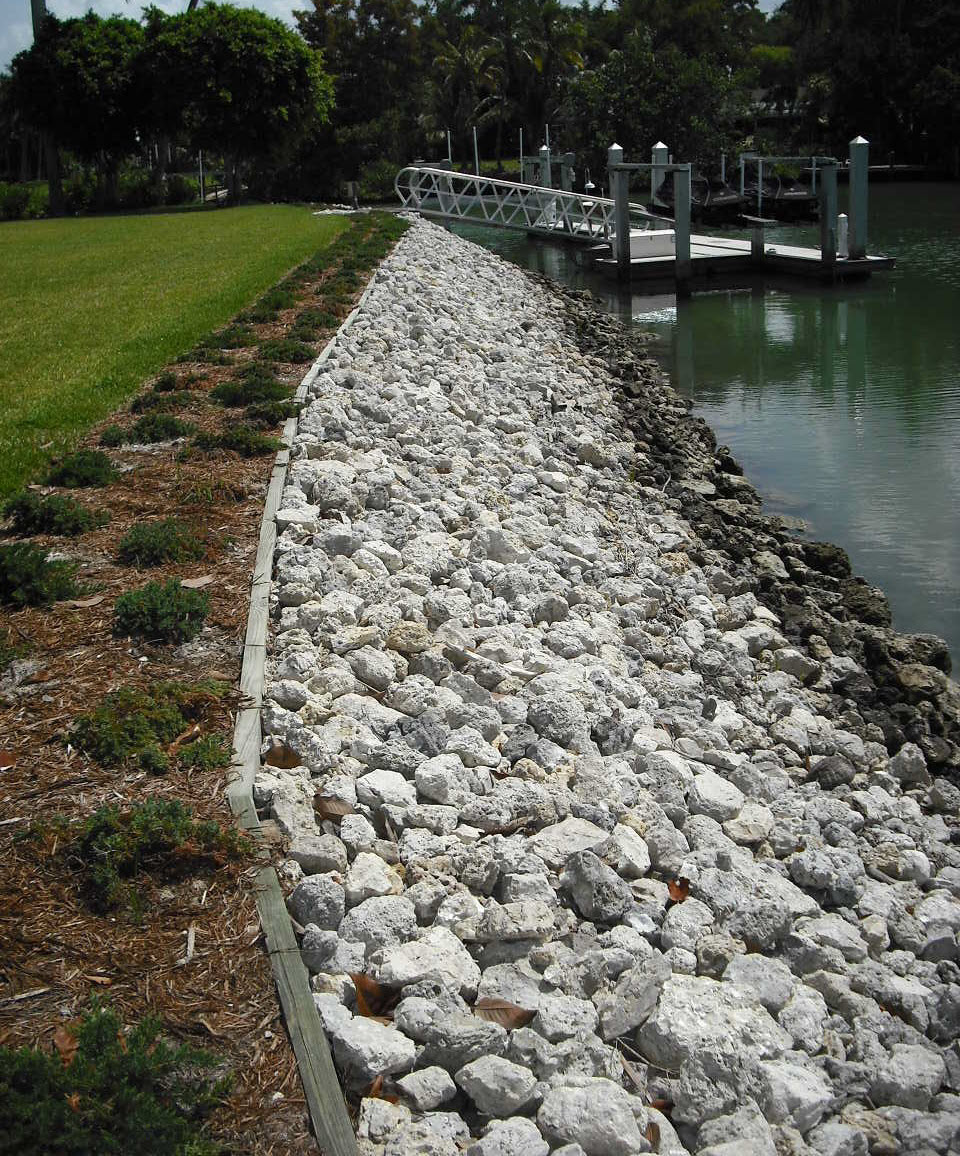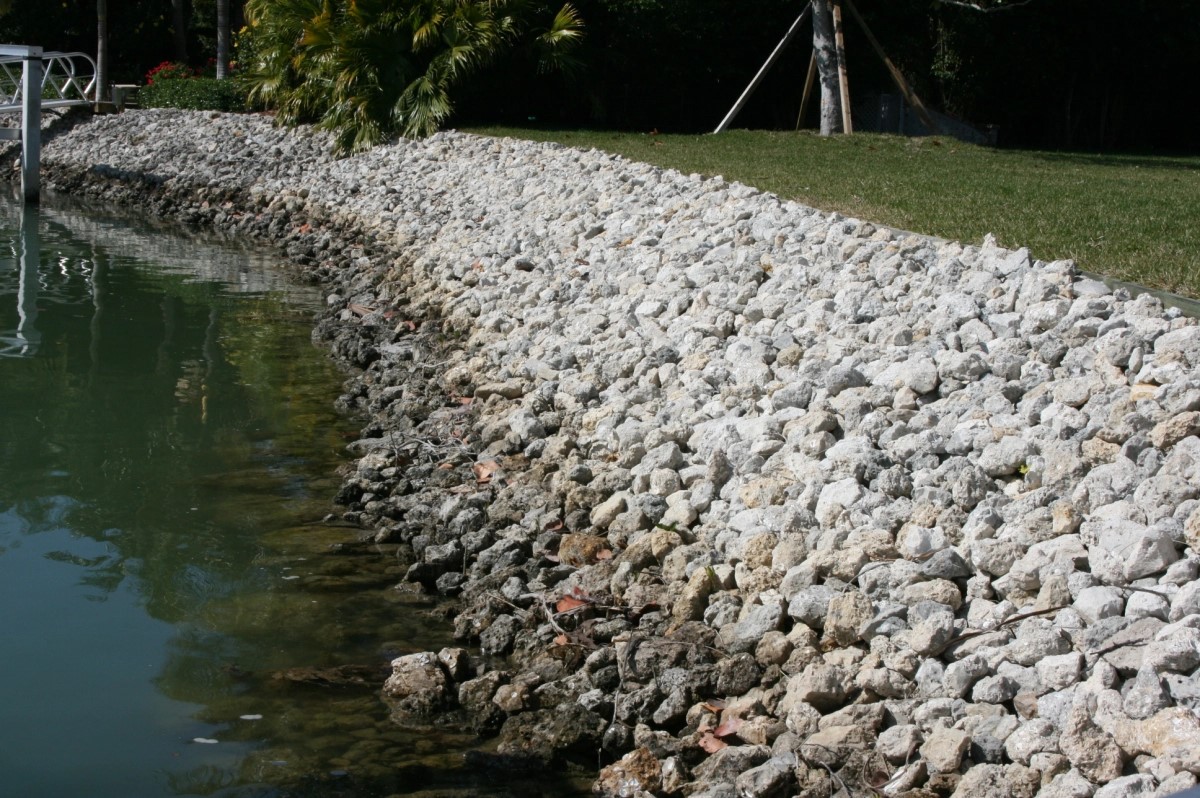Rip Rap Servicesin Grosse Pointe Woods MI
Rip Rap Placement to Protect Your Shoreline from Erosion
We Are Locally Owned & Operated For Over 37 Years
Contact Us Today!
We Serve Businesses In And Around The Following Cities:
About Rip Rap Services
A Comprehensive Guide to Rip Rap in Grosse Pointe Woods
The commercial properties in the city of Grosse Pointe Woods, Michigan, bear witness to the numerous benefits of rip rap. This practical and aesthetically pleasing method of erosion control has seen an increased adoption among local businesses. Of course, attention must be paid to the process, benefits, and real-world applications of this unique landscaping solution.
Understanding the Process of Installation
The installation of rip rap begins with a careful assessment of the area to be covered, which could be a shoreline, a ditch, culvert, or even a driveway. The process involves setting a foundation layer of rip rap rock or rip rap stone after the ground is evened and a high-quality geotextile is applied. Firms such as D&J Contracting carry out this procedure meticulously to ensure longevity and sturdiness. Once the foundation is set, layers of larger, landscape rip rap or riprap rock are added to create the final protective layer. This process warrants particular expertise to prevent unwanted shifting or sinking over time.
Benefits of Rip Rap
Rip rap offers several advantages for commercial properties. Primarily, it serves as a formidable solution for erosion control, with rip rap rock efficiently managing runoff and preventing soil displacement in rip rap ditches or shorelines. It can also drastically enhance the aesthetic appeal of commercial premises, with landscape rip rap and stone rip rap adding a rugged natural quality to otherwise urban environments. More practical benefits include the minimal maintenance it requires, contributing to its growing popularity among businesses in Grosse Pointe Woods.
Real-World Application in Commercial Spaces
Businesses in Grosse Pointe Woods have implemented their own interpretations of rip rap. From improving driveways with rip rap rock driveway installations to enhancing lakes or ponds with pond rip rap or pond riprap, there are countless applications. You might have visited commercial establishments where rip rap is used to manage erosion control with riprap around building bases, rip rap culverts, and even rip pap passages to manage water flow. These examples illustrate how versatile and functional rip rap can be when implemented intelligently.
Appropriate Choice of Rip Rap Materials
Not all rip rap materials serve the same purpose. For instance, rip rap gravel might be used in more residential, less traffic-heavy applications, while rip rap ditches might employ larger, chunkier riprap erosion control stones for greater stability. Riprap can be sourced locally, ensuring materials like ‘rip rap rock near me’ or ‘rip rap stone near me’ are readily available. Expertise from firms like D&J Contracting can also help determine the appropriate choice based on local climate conditions, availability of materials, and specific requirements of the project.
Why Rip Rap is Preferred for Erosion Control
Rip rap is increasingly being used for erosion control, replacing traditional man-made structures in commercial settings. It offers greater flexibility and an easier implementation process compared to constructing concrete structures for the same purpose. From controlling erosion in rip rap pond surroundings to managing water flow in rip rap rock ditches, it has proven itself extremely effective in both managing and preventing effects of erosion. Therefore, it comes as no surprise that businesses are opting for rip rap for erosion control over more traditional, less eco-friendly methods.
To summarize, rip rap provides a functional and aesthetic solution for commercial properties in Grosse Pointe Woods, offering multiple benefits with versatile applications. It represents a smart blend between urban development and eco-friendly practices, ensuring a sustainable future for our cities. Whether it is enhancing the landscape, controlling erosion or reinforcing infrastructures like driveways and culverts, rip rap has proven its worth. For your rip rap needs, consider contacting D&J Contracting, a local expert with years of experience in the industry, to guide you through the process and ensure the job is done right.
Rip Rap Services Gallery


Call Us Today to receive your Free Quote for
Rip Rap in Grosse Pointe Woods
Serving: Grosse Pointe Woods, Michigan

About Grosse Pointe Woods, Michigan
While initially settled over a century ago, much of the city in its current form was built in the middle of the 20th century, particularly around and just after World War II, distinguishing Grosse Pointe Woods from older portions of Grosse Pointe.
The city was originally incorporated as the Village of Lochmoor in 1927 from the last unincorporated portion of Grosse Pointe Township. The village annexed the Stanhope-Allard strip of land from what was then Gratiot Township in 1931. The village changed its name from Lochmoor to Grosse Pointe Woods in 1939, but didn’t incorporate as a city until 1950.
According to the United States Census Bureau, the city has a total area of 3.25 square miles (8.42 km), all land. It is the only one of the five Grosse Pointes with no Lake St. Clair shoreline, although the city owns a park in neighboring St. Clair Shores that is on the lake.
| Census | Pop. | Note | %± |
|---|---|---|---|
| 1930 | 961 | — | |
| 1940 | 2,805 | 191.9% | |
| 1950 | 10,381 | 270.1% | |
| 1960 | 18,580 | 79.0% | |
| 1970 | 21,878 | 17.8% | |
| 1980 | 18,886 | −13.7% | |
| 1990 | 17,715 | −6.2% | |
| 2000 | 17,080 | −3.6% | |
| 2010 | 16,135 | −5.5% | |
| 2020 | 16,487 | 2.2% | |
| U.S. Decennial Census | |||
As of the census of 2010, there were 16,135 people, 6,416 households, and 4,681 families living in the city. The population density was 4,964.6 inhabitants per square mile (1,916.8/km). There were 6,819 housing units at an average density of 2,098.2 per square mile (810.1/km). The racial makeup of the city was 91.4% White, 4.5% African American, 0.1% Native American, 2.4% Asian, 0.3% from other races, and 1.3% from two or more races. Hispanic or Latino of any race were 1.7% of the population.
There were 6,416 households, of which 31.9% had children under the age of 18 living with them, 60.0% were married couples living together, 10.0% had a female householder with no husband present, 3.0% had a male householder with no wife present, and 27.0% were non-families. 24.4% of all households were made up of individuals, and 12.7% had someone living alone who was 65 years of age or older. The average household size was 2.51 and the average family size was 3.01.
The median age in the city was 45.1 years. 23.7% of residents were under the age of 18; 6.2% were between the ages of 18 and 24; 20% were from 25 to 44; 32.4% were from 45 to 64; and 17.7% were 65 years of age or older. The gender makeup of the city was 47.9% male and 52.1% female.
As of the census of 2000, there were 17,080 people, 6,531 households, and 4,970 families living in the city. The population density was 5,237.3 inhabitants per square mile (2,022.1/km). There were 6,717 housing units at an average density of 2,059.6 per square mile (795.2/km). The racial makeup of the city was 96.30% White, 0.63% African American, 0.06% Native American, 2.08% Asian, 0.11% from other races, and 0.81% from two or more races. Hispanic or Latino of any race were 0.98% of the population.
There were 6,531 households, out of which 35.1% had children under the age of 18 living with them, 65.4% were married couples living together, 8.5% had a female householder with no husband present, and 23.9% were non-families. 22.0% of all households were made up of individuals, and 10.8% had someone living alone who was 65 years of age or older. The average household size was 2.60 and the average family size was 3.07.
In the city, the population was spread out, with 26.1% under the age of 18, 5.0% from 18 to 24, 25.2% from 25 to 44, 25.6% from 45 to 64, and 18.2% who were 65 years of age or older. The median age was 42 years. For every 100 females, there were 92.7 males. For every 100 females age 18 and over, there were 87.7 males.
The median income for a household in the city was $78,558, and the median income for a family was $89,086. Males had a median income of $70,488 versus $43,665 for females. The per capita income for the city was $38,653. About 1.7% of families and 2.4% of the population were below the poverty line, including 2.3% of those under age 18 and 2.8% of those age 65 or over.
Our Lady Star of the Sea school originally opened in 1957, in a narthex of the church, educating first graders only, while a new adjacent K-8 school building was being built.
Grosse Pointe Woods is served by the Grosse Pointe Public Schools. Three public elementary schools are in the city limits and serve the city limits: Ferry, Mason, and Monteith. Most residents are zoned to Parcells Middle School in Grosse Pointe Woods, while some areas to the southwest are zoned to Brownell Middle School in Grosse Pointe Farms. All residents are zoned to Grosse Pointe North High School in Grosse Pointe Woods.
University Liggett School is in Grosse Pointe Woods.
Our Lady Star of the Sea School, a private Catholic K-8 school, is in the community. It first opened in 1958. Our Lady Star of the Sea High School, a girls’ school, opened in 1959. When the high closed in 1993, the middle school began using the building.
The Grosse Pointe Public Library operates the Woods Branch in Grosse Pointe Woods.
Call Us Today to receive your Free Quote for
Rip Rap in Grosse Pointe Woods
Related Services in Grosse Pointe Woods, Michigan
We Serve Businesses In The Following Zip Codes:
48007, 48015, 48021, 48026, 48035, 48036, 48038, 48042, 48043, 48044, 48045, 48046, 48047, 48048, 48050, 48051, 48066, 48071, 48080, 48081, 48082, 48083, 48084, 48085, 48088, 48089, 48090, 48091, 48092, 48093, 48098, 48099, 48225, 48230, 48236, 48310, 48311, 48312, 48313, 48314, 48315, 48316, 48317, 48318, 48397